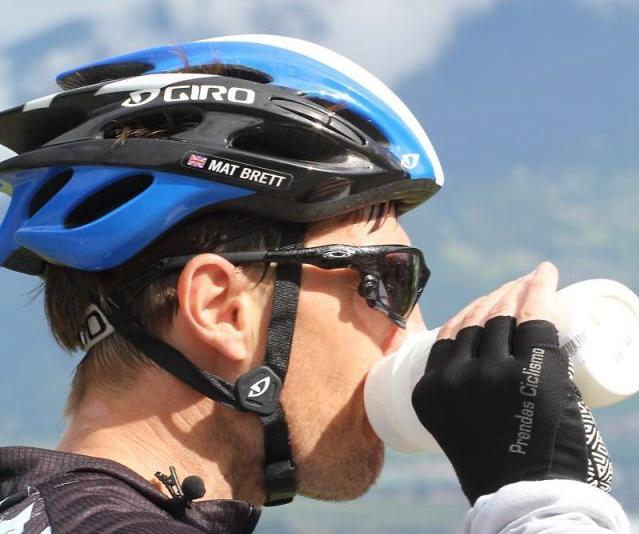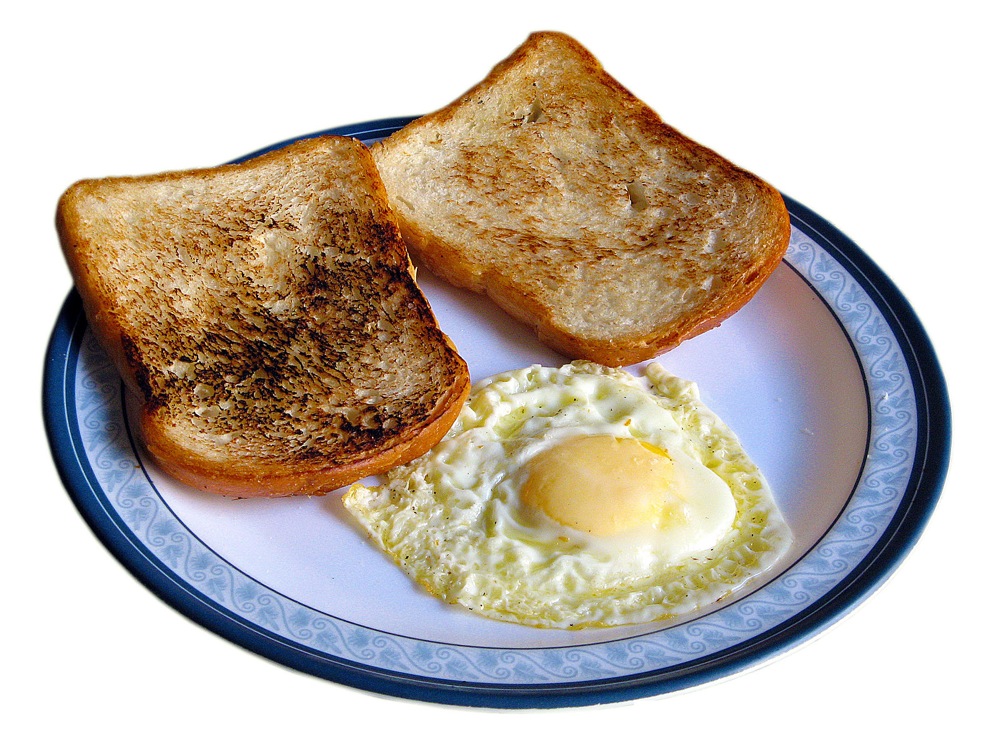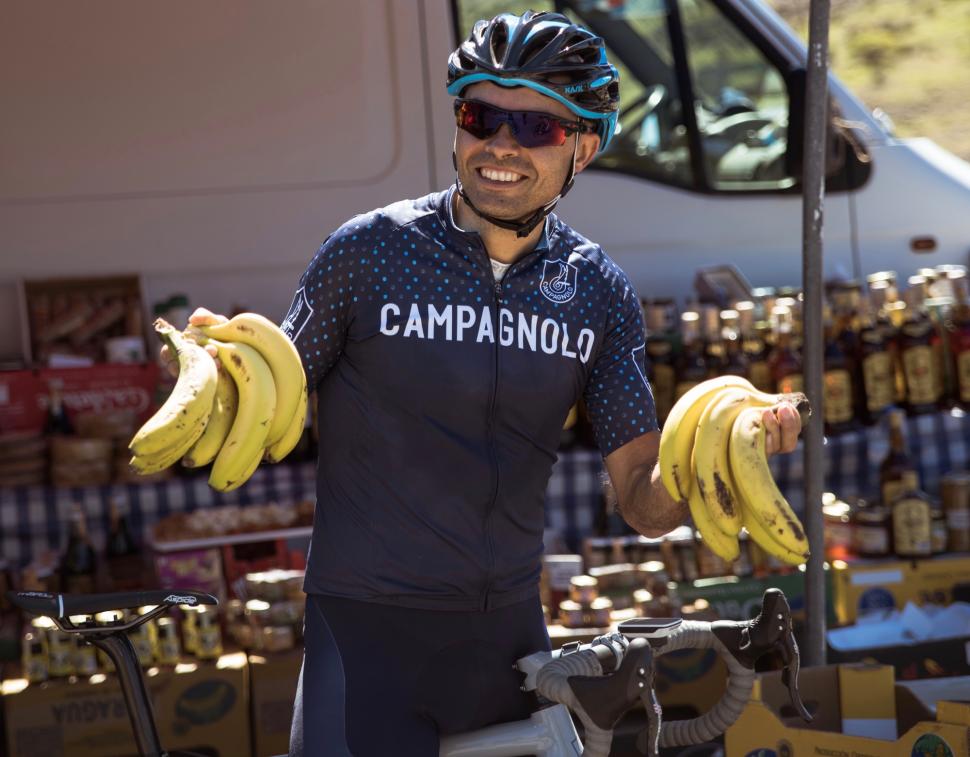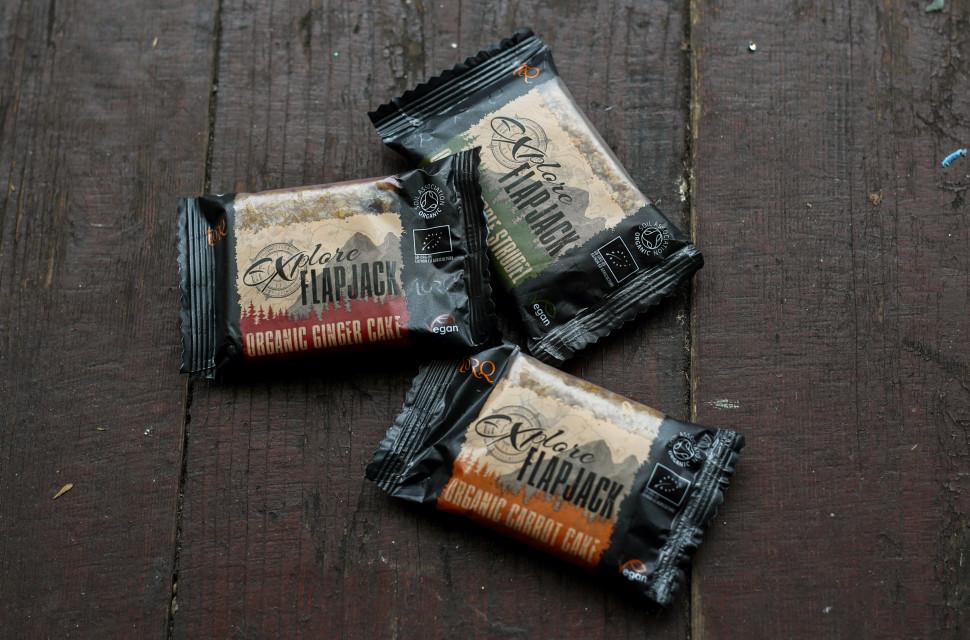- News
- Reviews
- Bikes
- Components
- Bar tape & grips
- Bottom brackets
- Brake & gear cables
- Brake & STI levers
- Brake pads & spares
- Brakes
- Cassettes & freewheels
- Chains
- Chainsets & chainrings
- Derailleurs - front
- Derailleurs - rear
- Forks
- Gear levers & shifters
- Groupsets
- Handlebars & extensions
- Headsets
- Hubs
- Inner tubes
- Pedals
- Quick releases & skewers
- Saddles
- Seatposts
- Stems
- Wheels
- Tyres
- Tubeless valves
- Accessories
- Accessories - misc
- Computer mounts
- Bags
- Bar ends
- Bike bags & cases
- Bottle cages
- Bottles
- Cameras
- Car racks
- Child seats
- Computers
- Glasses
- GPS units
- Helmets
- Lights - front
- Lights - rear
- Lights - sets
- Locks
- Mirrors
- Mudguards
- Racks
- Pumps & CO2 inflators
- Puncture kits
- Reflectives
- Smart watches
- Stands and racks
- Trailers
- Clothing
- Health, fitness and nutrition
- Tools and workshop
- Miscellaneous
- Buyers Guides
- Features
- Forum
- Recommends
- Podcast
feature
 Mat drinking 2
Mat drinking 2Fuelling for epic rides — how to get the right food to keep your energy levels up and avoid the dreaded bonk
Whether you’re tackling a sportive for the first time or returning to an event to chasea new personal best, one thing that will be hugely beneficial in helping you achieve your goal is planning your nutritional strategy. And it doesn’t even have to be a sportive – the same advice applies to any long ride.
Nobody wants to be stranded in no man’s land mid-sportive in one of those cycling clichés of ‘hitting the wall’ or getting the dreaded ‘bonk’. But stopping at every available feed station and filling your pockets and stomach with anything and everything on offer won’t benefit you either. Therefore, spending a small amount of time planning and thinking about your nutritional strategy will give you a confidence boost; you’ll know that your performance will not be compromised by your nutrition on the day.
Follow these tips for pre-event preparation, and nutrition and hydration on the day.
On the day: before the event
First things first, always start your day with a good high-carbohydrate meal. In most cases, with sportives starting in the morning, this will be breakfast – and be prepared for an early meal, depending on the start time of your event.
• Avoid high fat foods that may lie heavy on your stomach.
• Try to consume the meal 2-3 hours before you ride to allow the food to digest (although this may not always be feasible). The closer to the event you eat, the smaller the snack should be. For example; if you are within 90 minutes of the start, opt for a large banana, energy bar and/or an energy drink that will provide a good source of carbohydrate to set you on your way.
On the day: fuelling during the event
Your body will use a combination of fat and carbohydrate to fuel your ride. The harder you work, the more carbohydrate you will use. The body’s carbohydrate stores are limited and can be rapidly depleted so it is very important to keep your carbohydrate stores topped up for the duration of the event. Without available carbohydrate your body will depend more on fat as a fuel. You may think that burning fat sounds great but to do this your body needs a lot more oxygen and in response to this your pace will slow. That’s not ideal if you want to achieve a fast time or a new PB.
The general rule for carbohydrate intake during an endurance event is that you need to supplement 1g of carbohydrate per kilogram of bodyweight per hour of exercise (1g/kg/h), this will help you sustain your energy levels when riding at a brisk pace.
A 70kg athlete, for example, could consume one of the following per hour:
• 500ml of energy drink and a medium banana
• A medium slice of flapjack and an energy gel
• A small jam sandwich and 2 cereal bars
Using sport nutrition products is not essential. In ultra-endurance sportives it may be worth keeping the use of gels and caffeine gels in reserve for the closing stages of the event.
On the day: hydration
Did you know that as little as a 2% loss of body water could cause a significant decline in your performance? As you ride you are constantly losing water, predominantly through sweating. This needs to be replenished. There are some very good general principles to follow, but there are a number of variables to bear in mind, and these can change.
• Think about climate, the intensity you ride at and also the duration of the event. They can all play a huge part in not only how you maintain hydration levels but also fuelling.
• On hot days sweat rates will increase so fluid intake needs to be increased accordingly. Also note that sweat rates can also be as high in cold weather, especially when you put extra layers or non breathable garments on.
• As a rule of thumb aim to drink around 500ml per hour of riding. Adjust this upwards if you notice your sweat rates are high or if it is significantly warmer.
• Having plain old tap water maybe fine for 1-2 hours of riding but for long, gruelling sportives it is important to replenish your electrolytes; the salts lost as part of your sweat. This is where the use of energy drinks really comes into play. Not only can you use their carbohydrate content as part of your fuelling strategy, but you are also ticking the hydration box and topping up your electrolytes stores at the same time.
• Have a look at the course map beforehand to check out where the feed zones are in relation to the challenging parts of the course. If you can avoid it, you don’t want to be filling your bottles up when you have a huge climb around the corner.
Training for the event and recovering afterwards
Of course, whether it is your first sportive, or you are looking for a new PB, your focus is on the event itself – but remember that nutrition and fuelling whilst you ride is not only important during the sportive itself, but also during your training for the big day.
• During training you should take a similar approach to what you are planning to do during the event itself.
• One major thing to remember during training is nutrition for recovery. Not only is this very important in helping your body adapt and improve from the training you have done, it will also help you speed your recovery ready for the next session.
• It’s important to kickstart the refuelling process within 30 minutes of the end of your ride. This is known as the ‘window of opportunity’ for optimum recovery.
• After training or the event itself, especially if it is a multi-stage event, aim to consume a snack or meal that is high in protein to aid muscle repair, and rich in carbohydrate to refuel your body’s glycogen stores.
• Sports recovery drinks are convenient and formulated to give you the right amount of protein, carbohydrate, vitamins and minerals.
• If you prefer to eat, try and consume a snack that is rich in protein and carbohydrate, for example a chicken sandwich, eggs on toast or low fat chocolate milk.
• Check out our Top 5 Tips For Optimal Recovery.

This information should be used as a guide to help you devise a strategy that works best for you in fuelling, hydrating and recovering from training and any sportive or endurance event you are undertaking. Nutrition is a very individual thing,and no two people are exactly alike in their requirements, so we can only provide you with a guide. It is always best to trial any fuelling or hydrating strategies in training before the big event, that way you can find foods that work for you.
For more information, or should you have any specific questions, please contact the OTE team: email thebunker [at] otesports.co.uk or check our blogs.
Cafe Wisdom
Road.cc readers always have plenty of knowledge, advice and opinion on most topics, and nutrition is no exception. Here are the best comments from past versions of this article
Ssssshhhh Paul. The Secret Ingredient Service will hunt you down.

The DIY route is great, but only in the 2 you fill at home, in the grand scale of things, electrolyte tabs are cheap, convenient and you can find one to your taste that will be consistent

If you're going on longer rides where you might need to refill, then you can easily bring salt/sodium bicarb mix with you in a suitable container. E.g. I've used a small, plastic, pill bottle in the past. Though, then you may wish to get maltodextrin powder to add in - honey obviously won't work, and ordinary sugar isn't easy to digest. Also, then, you won't be adding fruit concentrate, and you may wish to add some citric acid powder (bigger and asian supermarkets often sell this) (you want about ¾ tsp citric acid to 1 tsp sodium bicarb).
If you really do prefer to buy something pre-packaged, you could also just get some di-oralyte sachets from a pharmacy. Not as cheap, but still usually a little bit cheaper than these energy drink powders.
If you really do want to be absolutely fleeced, then sure, go ahead and pay 10x+ the price for very basic ingredients and buy these sports energy drink powders.

Or mix one bottle to 3 or 4 times concentration and use that to top up your main bottle when you refill.

And enjoy the grilling you get when you buy the citric acid... As I did when making elderflower champagne. Apparently heroin users buy it to cut drugs with!

I should say it was just electrolyte I was referring too with the wee tabs, not energy powder mix, I don't use the latter.

Load up on ham sarnies from the start, preferably in rolled flatbread form, then onto the bars/flapjacks and bananas, only gels if absolutely necessary. caffeine gels, coffee, coke etc are only any good if your body is not used to the caffeine, so if you want that boost, do stay off the stuff for a week before, then it'll be like rocket fuel. (Works for me any way).

Ham & egg butties, potato cakes, flapjacks, jelly babies and in dire straits a gel. Sorted.

Home made sports drink works for me a pinch of salt good squirt of honey and some orange squash. I've not tried the bicarb what does that do?
As for carbs malt loaf is the fuel of choice for me it keeps you going big time, not forgetting bannas the potassium provides a boost that works amazingly well.
I've experimented with shop bought stuff but it's expensive, doesn't taste great and works no better than the stuff I've described above.
Finally y'just carn't beat chocolate and the co-op do a brilliant flapjack with chocolate.
This stuff has got me round the Fred Whitton in 7:38.

Oh dear. It's the same old junk food comments like gels, jam and fried eggs. That's why fit cyclists drop dead with heart attacks. You do not get carte Blanche to eat junk. The best advice on thisarticle is the bananas. The water bit is OK but others have noted the electrolyte controversy. Other than that, make yourself cereal mixes or bars and eat good healthy meals to get the carbs in.

Peowpeowpeowlasers replied to a.jumper
Oh dear. It's the same old junk food comments like gels, jam and fried eggs. That's why fit cyclists drop dead with heart attacks.
Fried eggs are not junk food. There's nothing unhealthy about natural fat and eggs provided you exercise enough to use the energy they provide. Any food in moderation is fine.
And fit cyclists tend not to have heart attacks, certainly not on the same scale as obese, inactive people.

Ghedebrav replied to Peowpeowpeowlasers
Oh dear. It's the same old junk food comments like gels, jam and fried eggs. That's why fit cyclists drop dead with heart attacks.
Fried eggs are not junk food. There's nothing unhealthy about natural fat and eggs provided you exercise enough to use the energy they provide. Any food in moderation is fine.
And fit cyclists tend not to have heart attacks, certainly not on the same scale as obese, inactive people.
No, but being fit and active is not an excuse to pig out on Caramacs and Yorkies.
Bananas are tasty, cheap, come in their own yellow jersey and - crucially - are the most aero fruit of all. However, rumours that Team Sky are wind-tunnel testing genetically-enhanced straight bananas are as yet unconfirmed.

a.jumper replied to Peowpeowpeowlasers
Fried eggs are not junk food. There's nothing unhealthy about natural fat and eggs provided you exercise enough to use the energy they provide. Any food in moderation is fine.
And fit cyclists tend not to have heart attacks, certainly not on the same scale as obese, inactive people.
Yes, I agree that obesity is worse, but a distressing number of "fit" endurance riders have heart attacks. You must not get too much energy from fat or refined sugar, as far as we can tell from research so far. Poached or boiled eggs will usually beat fried.

Eggs contain all the essential amino acids; coffee with a raw egg in it and GO

Or if Sir Bradley Wiggins is your name...... " I did 7½ hours on the bike that day in Majorca. I had no breakfast, and didn’t eat anything on the bike all day "

Some sensible advice here although more and more research is coming out to indicate that energy drinks actually contribute to dehydration, ironically, so I now prefer to stick with electro tabs and get my kcals from solid food.
Also, that 1g carbs per kg per hour ratio is on the high side, depending on intensity. A lot of people find that something between 40-60g is the maximum carbs their body can absorb every hour without feeling nauseous. So it's worth experimenting.

Yennings: Yeah, high sugars content can make energy drinks hard to stomach. Some suggestion even that at quite high concentrations they can even *extract* liquid from your blood stream into your intestines (presumably to be re-absorbed again, but later, once the carbohydrate has finally been digested - or you'd end up with bad diarrhoea).
The sickly high sugar content of energy drinks is what made me go mix my own.

Sodium bicarbonate or sodium citrate is found in a lot of energy drinks. It's alkaline/basic (though sodium citrate only weakly so), possibly may act as a buffer against acidic by-products of metabolism. A range of studies suggest this has a small but significant positive effect on performance.
Though, the amounts used in studies are usually a good bit higher than the teaspoon I suggest. Too much sodium bicarbonate can cause heart arrhythmias, so be careful.
Sodium citrate is produced if sodium bicarbonate reacts with citric acid. E.g., if you add fruit juice or concentrate to your drinks bottle with sodium bicarbonate.

Honey is like a magic food for me. A good quality one (like the stuff I brought back from Crete) works best, although any reasonble one works well.
A spoon full before setting off on an evening ride works wonders.
A pinch of salt in your water bottle is a good idea too. No need to buy sports drinks with all those weird chemical ingredients, best avoid all that shit!
Ride food, Bananas of course, malt loaf, flap jack and a few nuts, dates and dried fruit all work for me on longer rides.

Re: not being able to refill home made energy drinks on sportives or long rides, try this:
First bidon is filled and ready to drink.
Second bidon contains very slightly diluted mixture with enough to fill two bidons.
When the first bidon is running low, stop (at feedstation, or wherever) and pour half the mixture from the second bidon into the first and dilute it with water. You now have one bidon ready to drink and another ready to be diluted at the next stop.
This means you can get three bidons worth of your preferred energy drink AND you don't have to lug round the weight of a second full bidon either. You can do the same with shop-bought energy drinks too, if you prefer to use your own rather than whatever brand is being provided by event feedstations.

For a longish ride I use two bottles, one with energy drink, the other with plain water mixed about 50-50 with mineral water. A couple of energy bars. Works reasonably well, for me. Gels don't agree with the beard...
Electrolyte tablets seems like a good idea, though.

Nutrition has changed a lot in recent years and it has for me also. I dont have any carbs and I dont have any more crashes and the recovery is much faster.
1 bottle/hr Water + electrolytes is critical.
Second I eat 70% fat breakfast, 20% proteins and 10% carbs 2hrs before the ride and it last 3-4 hrs
Third: I have some pacanes and almonds + mCT oil during the ride to give another boost
Results: best results in last 20 yrs
I can’t be arsed with trying to mix all the ingredients in specific amounts to pop in my water bottle to make an energy drink. I just buy https://www.bulkpowders.co.uk/complete-hydration-drink.html (link is external)
If you wait until it is on offer (last lot I got was nearly 70% off!) and strangely the small bags worked out cheaper than a 5kg bag, then it costs pennies per 500ml bidon. Last t8me I worked it out at less than 20p per bidon. Unless you really are broke, that is very cheap for a quality product. It comes with a scoop which makes 500ml. I fill one bottle with this energy/ electrolyte mix and the other plain water. Depending on the length of ride I put a scoop or two, or three in small, sealable plastic bags to carry in a jersey pocket. It really is as simple as that to take as much energy/ electrolyte mix as you need. The most I have carried was one bidon plus three small bags for a recent 200 mile ride.
Be careful though, it does look decidedly dodgy taking a bag of white powder out of your jersey pocket at a cafe stop!  For added effect, lick a little finger, dip it in and taste test your product befor popping it all in a bidon! For even greater effect, run your little finger around your gums!!!
For added effect, lick a little finger, dip it in and taste test your product befor popping it all in a bidon! For even greater effect, run your little finger around your gums!!!
I have no affiliation to Bulk Powders but have found their products to be fantastic and of course, really, really cheap compared to cycling specific brands. I can refer anyone as a friend and you get 35% off your first order...
PP
Add new comment
5 comments
Secret_squirrel
|
3 years ago
0 likes
Depressing to see all the BS about athletes being more suceptible to heart attacks in the thread above.
Its has no basis in fact - and with that I'm off for a Friday afternoon fry up before my mega session tomorrow.
In fact, there is a large body of research supporting that the population that perform the highest levels of physical activity (i.e. elite athletes) seem to present a lower risk of CV diseases and mortality.
https://blogs.bmj.com/bjsm/2017/04/06/elite-athletes-higher-risk-develop...

https://bjsm.bmj.com/content/53/1/37 seems to show that elite athletes have the same risk factors as everyone else, but many will have removed the voluntary ones (such as smoking) from their lives.
We tend to notice when we hear of fit people with health issues, and I think tend to over-assume that greater fitness is some sort of prophylaxis, such as those people who decided against covid vaccination because fitness made them somehow immortal.
A bit like "dog bites man", "gammon has heart attack" isn't very surprising, but "fit cyclist has arrhythmia" somehow is. (I was going to say "elite cyclist" but epo...).

The big pizza at 1200 kcal is probably home made as any big sized one from a chain will dump about 2000 kcals on you, most from fat.
Next morning glycogen stores will be topped up and that big bowl of bran flakes will take care of emptying your bowels (I agree: few things as bad as having to take a dump in the woods after 30 km). Also important: pre ride hydration. For any longish ride I drink a liter of water about 45 minutes prior to departure. Prepped like that, I only need one bottle and a small snack for anything upto about 50 km over 'normal' terrain. Beyond that it's a sandwich and a good drink every hour and -I'm not competing and ride alone most of the time- 45 minutes of rest, food (take bananas) and hydration when I'm about 3.5 hours in and again at 6, 9 and 12 hours. Eat fast, drink and relax, always feel reborn when I saddle up again. This works for me, ymmv. Longest ride I did on this regimen was about 300 km. I learned what worked the hard way after a couple of horrible boinks and -once- recuperating for the night in a cattle shed in the middle of nowhere before being able to continue, legs like noodles. Once you boink it's curtains so make sure not to go there.
Latest Comments
- Kapelmuur 1 min 19 sec ago
My bike was stolen from a supermarket car park in Calais, it was locked on a roof carrier....
- brooksby 14 min 8 sec ago
She had demonstrably caused serious injury so that's not up for debate (or shouldn't be)....
- Surreyrider 24 min 39 sec ago
I've tried Lakes in shops and they always seem to have a high volume, meaning a lot of space above my foot.
- chrisonabike 51 min 27 sec ago
Inescapable now it seems. On road.cc, on Cycling UK - they were even DJ'ing on drum and bass on a bike recently....
- BikingBud 1 hour 14 min ago
Yup - Rivermind! ****SPOILER ALERT***** https://www.radiotimes.com/tv/sci-fi/black-mirror-common-people-ending-e...
- lesterama 2 hours 16 min ago
A friend told me that Gravaa doesn't work with inserts. Visma actually glued their tubeless tyres on to avoid tyre detachments! Sounds like a...
- Velophaart_95 2 hours 35 min ago
That was my first thought when I saw, and read it........
- qwerty360 2 hours 42 min ago
My understanding was traffic data also suggests that its actually made driving quicker not slower in Paris....
- mitsky 4 hours 6 min ago
"... struck by a driver..." http://rc-rg.com


.jpg)
Or alternatively, opt out of paying ridiculously exorbitant prices for over-marketed staple salts & sugars that are available at 1/10th the price in bulk at super-markets, and just put some reduced-sodium salt (e.g. "LoSalt") into your drinks, maybe along with some sodium bicarbonate and honey.
A pinch of LoSalt (66% potassium, 33% sodium salts), a teaspoon of sodium bicarbonate, 1 to 3 tsps of honey and 1 to 2 shots of fruit concentrate in a large drinks bottle works really well for me. (FWIW, I sweat a lot, and usually encrusted in salt when I dry out).